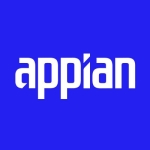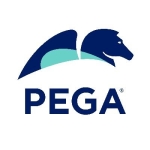I use the solution for financial institutions, where we push our data into the warehouses and analytics platforms. We query the Kafka messaging services and see whatever message we get. We used to take the API responses and load them into different target systems, some cloud-based and some on-prem. For some security reasons, we used to push the data to the on-prem and then the cloud versions.
In Informatica, we can export the metadata in XML format, and then we can see what all are available. Metadata querying is right now not there in Informatica Cloud Data Integration. Informatica Cloud Data Integration needs to make metadata querying available in the tool, and Informatica needs to put more reports to get the lineage details and then the source system, if at all there is a need for us to identify them. It is an area where we face big challenges. I started using Informatica Cloud Data Integration recently.
I have been using Informatica Cloud Data Integration for two years.
The solution's technical support is pretty good, especially since the turnaround time is good. When we raise tickets with the tech support team, we get support within the shortest span. I rate the technical support an eight out of ten.
I have used IBM Cloud Paks and Informatica Cloud Data Integration. Sometimes, we have to go with our client's perspective, especially if they have pre-existing licenses and get any discounts. My company has suggested IBM Cloud Paks, but with the existing things that our clients work on in Informatica, sometimes they prefer the same vendor. We did PoCs for both IBM Cloud Informatica Cloud Data Integration to help clients figure out the overall run time cost and then the number of credits that they are after, based on which they have opted for Informatica.
I have previously worked with IBM Cloud Paks and Snowflake, and both of them were client-specific tools for which we had to choose. If some tool was already in place, then it has already been paid for as a part of the procurement process, so we should continue with it. If it is a new proposal, then we have to go for it and list out to our customers all the things that we have in our pocket, and where we can take care of all the accesses, billing per hour for users, number of hours, and all such related details. After that, we suggest to our customers to take a call depending upon the amount of budget that needs to be allocated for the technical stuff.
For the last few months, I have been working only on Informatica Cloud Data Integration. Some people are interested in the Azure Databricks for their pipelines. Some of the partners who are providing tools to customers are also interested in Azure Databricks.
Instead of Informatica, I recommend IBM products to others, especially if someone already has other products from IBM's family or has purchased some information catalog. My company suggests that such customers go with IBM Cloud Paks since it allows you to lift and shift some of the existing jobs or processes to the IBM Cloud Catalog. If somebody wants to go for a cross-platform, then there was a time when my company used to suggest they go for Azure Databricks. It all depends on the existing infrastructure and a user's broader plan. Based on it, we used to suggest tools to customers. My company also used to look at what our customers were using and what their target was.
When it comes to the impact of the mapping and transformation features on data integration processes, Informatica has an existing license system where we directly map it to the existing cloud and then run it over the cloud. Any new development activities that we are doing are done directly on the cloud. Informatica has provided this migration tool for lift and shift purposes. With the tool, almost 80 to 90 percent of things are directly convertible from on-prem to cloud services, but through reports, we figured out that 10 percent can't be done, so we have to redo such areas in the cloud.
Speaking about the ease of use and learning curve of Informatica, I would say that my total experience is close to thirteen years with ETL tools. I have worked on multiple ETL tools on different clouds. I don't see much difference between IBM Cloud Paks and Informatica Cloud Data Integration. For me, these are more or less similar tools, with just a change in cosmetics.
Speaking about Informatica Cloud Data Integration's performance and scalability and how it meets our company's project needs, I would say that we have to buy CPU units. Initially, we had some 10,000 CPU units, and with that, we knew how many credits there were. Most of our systems are in production, so only with the peak loads, our threshold is not going beyond 60 to 70 percent of utilization.
Informatica Cloud Data Integration is associated with a bigger integration part where we have around 200 mappings and it works well. I don't see many issues in the tool except in the area of metadata querying. If I want to figure out a particular column of the table that is impacting the number of mappings, previously, we used to go for query, or we used to query in XML format. Currently, we have to call the APIs, but the information that we are after is not that precise.
Informatica Cloud Data Integration can be integrated with Salesforce. We can also have some other API integrations. If you have any specific systems, then considering whatever ERPs or legacy systems we have used with the tool, we don't see many issues.
I would recommend the tool to others. I would recommend the product to mid-sized companies. At the end of the day, everything is about the number of CPUs or the units that are needed to run it. Everything depends on the number of mappings of the growth prospect of the ETL pipelines that one is going to build. If it is mid-level and companies are above the mid-level zone, Informatica and IBM Cloud Paks are preferable to the other tools.
I rate the tool a seven and a half to eight out of ten.





















